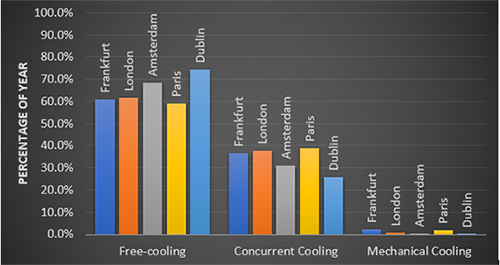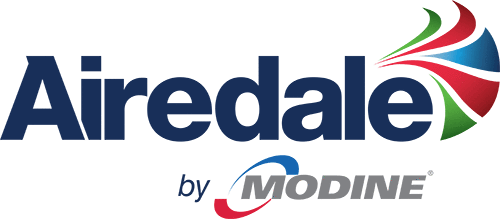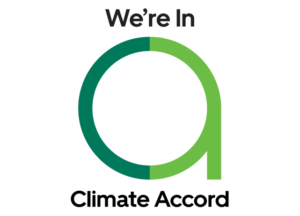After Adiabatics: How can Data Centres Respond to the Climate Crisis?
Updated 25/08/22 (Originally published Jul 21, 2019)
Along with the rest of the world, data centres are contending with the climate crisis. With the challenge of rising ambient temperatures causing cooling failures and major outages in key data centres, coupled with increasing energy supply issues and costs, it almost feels like a no-win situation.
Global Water Crisis
As global temperatures rise and the climate changes, rivers around the world are drying up. When we first wrote this article, we noted that in 2015 the World Economic Forum in Davos listed “water crises” for the first time as the world’s leading threat; this is not a crisis limited to developing countries.
We live on a blue planet…yet only 1% of the world’s water is useable. Growing populations, intensive urbanisation and industrialisation are putting strains on this 1% like never before.
With almost half of Europe under official drought warning conditions this summer (2022), questions are starting to be raised around water usage in data centres. In the UK, recent high temperatures and widespread drought conditions have already caused issues with cooling systems and prompted water companies to launch probes into the water usage of European data centres.
All things considered, what can be done?
How to achieve low energy cooling in high density data centres whilst minimising water usage
The data centre industry’s rapid expansion in recent years is well documented and shows no sign of abating. However, with great power comes responsibility. A recent report suggests that by 2025, data centres will consume one-fifth of all the electricity in the world. Stats like this have served to bring the sector under the spotlight and it has come under increasing pressure in recent years to reduce its carbon footprint and operate more efficiently.
The primary source of energy consumption in most data centres is cooling. This energy usage mainly comes from large industrial equipment such as pumps, chillers and cooling towers, which are used to regulate data centre temperature. It is important for the air conditioning industry to take its energy efficiency responsibilities seriously.
Measures like Power Usage Effectiveness (PUE) have helped steer the industry down a greener path and technological strides have been made in order to increase efficiencies, but PUE doesn’t tell the whole story. The use of water in data centres is increasingly coming under the microscope.
Air-side Optimisation
Around ten years ago, the optimisation of air temperatures was introduced as the latest way for data centres to increase efficiencies. At the time, many data centres ran at 20°C to 22°C. However, as server technology advanced, data centres were able to run at higher temperatures which reduced the cooling requirement and provided more opportunity to utilise free-cooling. Airedale International pioneered this with the introduction of chillers specifically designed to take advantage of the free-cooling opportunity, resulting in a lower cost of ownership for operators.
Adiabatic Cooling systems
In recent years, air-side optimisation has been built on with the introduction of adiabatic cooling systems. This technique incorporates both evaporation and air cooling into a single system. The evaporation of water, usually in the form of a mist or spray, is used to pre-cool the ambient air to within a few degrees of the wet bulb, allowing cooler and more efficient operation.
The use of spray or mist means water use is significantly lower than with more traditional evaporative systems, but a conservative water usage estimate for a modern data centre employing an adiabatic cooling system would still be 500,000 litres /1MW/Annum. As data centres grow larger, this becomes a real concern, particularly in regions where water shortages have been identified as a threat. To put the figures in context, data centres throughout the United States were estimated to consume a combined 174 billion gallons of water in 2020 (US Department of Energy report).
The water usage itself is not even the whole story. This water still has to be stored and treated which increases capital costs and as with any mechanical equipment exposed to continuous water contact, cooling plant has been seen to suffer from increased degradation, putting strain on OPEX costs too.
Water Side Optimisation
Having recognised the need for cooling systems that provide something close to the efficiencies that can be achieved with adiabatic cooling, but with a more sensitive approach to water conservation, Airedale developed an innovative approach to data centre cooling, that takes the philosophy behind air side optimisation and evolves it further. Airedale call this Water Side Optimisation. And Water Side optimisation is proving its worth in many of the world’s leading data centres already.
The philosophy of Water Side optimisation is based on taking an optimised air environment and looking at what other variables can be adjusted in order to deliver more free-cooling. Assuming that the air within the data centre white space stays at the same temperature, the next step was to reduce the approach temperature whilst opening the difference between water supply and water return. Implementing innovations within the plant equipment means the supply and return air remain as before, but supply and return water temperatures are higher, thus the approach temperature is reduced. We design in a fixed temperature difference of 12°C on the air side with the fluid side being opened out to 10°C and the approach temperature closing from 6°C to 4°C.
The system features that deliver these variables are:
- Higher water temperatures, meaning less mechanical cooling
- Pressure sensors at aisle level, with fans controlled to a fixed pressure output
- Deep-row chilled water coils and simplified air paths in CRAHs
- Ducted hot air return
- Free cooling chiller with large free cooling coil
- Holistic controls system (not a BMS) delivering constant dynamic supervision of the whole system
Free-cooling chillers are matched to large surface area chilled water coils in either indoor CRAC units or fan walls. The air path is simplified using hot aisle containment, creating a pressure differential that draws cool air through the servers and out of the white space via ducts and back to the air conditioning plant via a common plenum. The air is introduced directly to the space via side wall diffusion, minimising air side pressure drops.
The benefits of this are:
- Less mechanical cooling meaning more efficient chiller operation.
- Lower fan speeds meaning more efficient indoor unit operation.
- Lower pump power meaning more efficient water transfer.
- Large coil surface leads to increased cooling for less footprint (more cooling capacity per m.)
This is all managed with an intelligent controls platform that monitors fluctuating demand within the white space and dynamically operates the system at its most efficient operating point.
Based on average temperatures for London, an extra 2°C creates many more hours of free cooling. 14% more free cooling (59% in total) can be achieved with Water Side Optimisation, with all but 1% of the rest of the year being covered by concurrent cooling (a combination of free cooling and mechanical), giving huge benefits in terms of chiller efficiency. This system could provide free cooling for over 50% of the year in all of Europe’s major data centre hubs (London, Frankfurt, Amsterdam, Paris, Dublin).
Airedale’s Water Side Optimisation solution is in operation in major data centres across Europe, offering considerable efficiency benefits. A recently commissioned colocation data centre in a FLAPD region is delivering PUEs of 1.16 as a result of Airedale’s advanced cooling techniques.
The Heat is On
Higher ambient temperatures in Europe over the summer of 2022 have ramped up the pressure on data centre operators and cooling companies, with widespread coverage in both trade and national press of challenges brought about by hot weather conditions.
With higher peak summer temperatures seemingly part and parcel of a “new normal” as climate change bares its teeth, Airedale are looking at how our solutions can provide robust cooling to our digital infrastructure, without putting undue strain on natural resources.
Our data centre chillers are now being designed for much higher ambient temperatures as standard. 45°C is now becoming the norm, as opposed to what was 35°C up until fairly recently. We believe this will future proof our designs for Europe’s major growth regions and we are supplementing this with advancements in our system designs and free cooling capabilities.
Our software systems are also under constant development, with new additions to our IQity framework planned in the near future. Using intelligent supervision systems to automatically shed non-critical loads in high ambient conditions is one way of ensuring critical cooling systems are able to deliver constant cooling to IT loads.
One of the issues with high peak temperatures is the power draw on the chiller when it initiates mechanical cooling. Our engineering teams are looking at various options to mitigate this. We are also researching free cooling coil innovations that will reduce air side pressure drop and assist our peak operating ambient condition, delivering greater air flow across the condenser coils.
As a critical cooling specialist committed to providing sustainable cooling solutions for a data centre industry committed to taking its environmental responsibilities seriously, you can be assured that Airedale are not standing still as the world continues to throw up new challenges. If you are a data centre operator or design consultant and want more information on our data centre cooling solutions and development pipeline, fill in a contact form or liaise with your usual Airedale representative.








